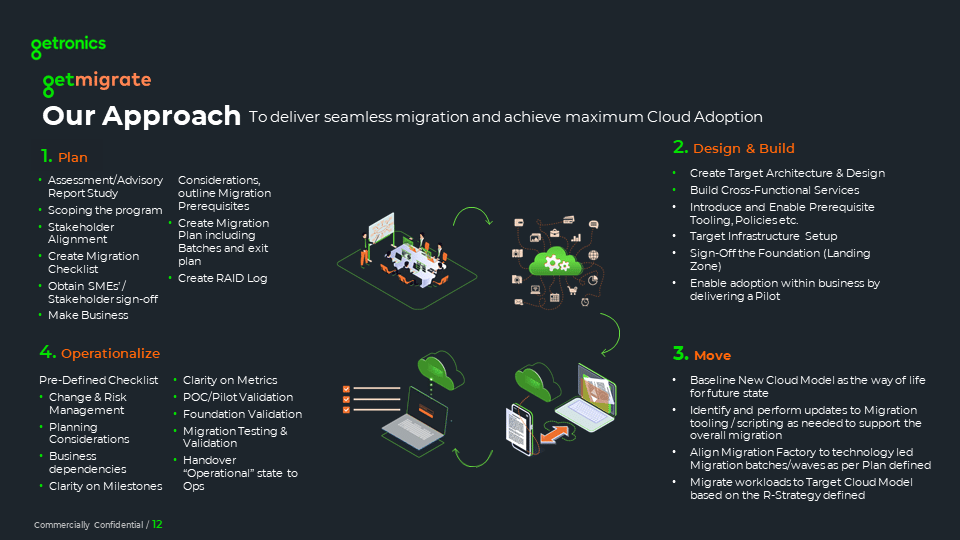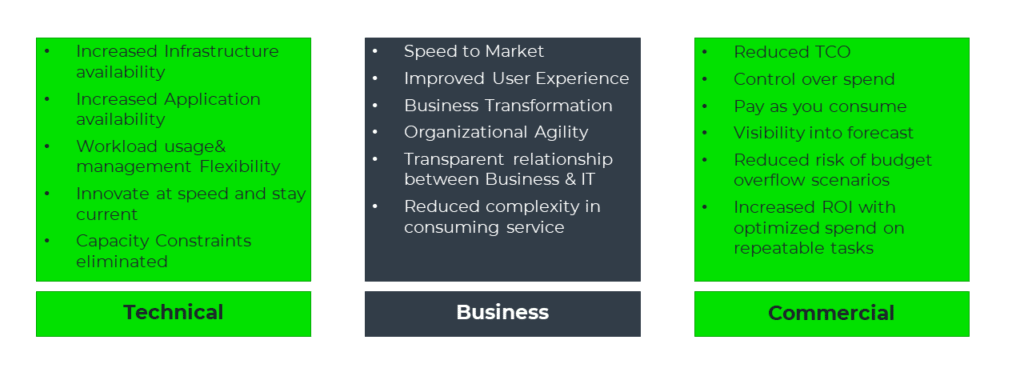
Suraj Raghunath
Global Portfolio Partner
In this article:
The cloud migration services market is expected to be worth $448.34 billion by 2026, driven by countless organisations seeking access to the many benefits that accompany cloud adoption. These include advantages around scalability, cost, efficiency, and more. But cloud migration doesn’t mean simply signing up with a cloud provider and expecting all your IT and process challenges to fade away.

Successful cloud migration depends on the right adoption framework. Technical considerations are important, of course, but so too are change management systems. Can you coach the client to be ready for cloud migration? Are they prepared for the (many) things that can change once they’ve moved to the cloud? Or even while they are moving to the cloud? Migration is not the end goal; it’s an ongoing process. One where Getronics and its getmigrate service is tailor-made to help.
Constantly evolving
For more than a decade, the accepted approach to cloud migration usually followed Gartner’s “R Strategy.” This was formulated in 2011 and revolves around five “Rs” that must be followed: Replace & retire; Rebuild; Rearchitect; Refactor; and Rehost. Here’s what they all mean:
- Rehost: Redeploy an application to another physical, virtual, or cloud infrastructure without recompiling, altering the application or code or modifying existing features and functionality. Also known as ‘lift and shift’.
- Refactor: Restructure and optimise existing code without changing its external behaviour to remove technical debt and improve the component’s features and structure.
- Rearchitect: Materially alter the application code so you can shift it to new application architecture and fully exploit new and better capabilities of the application platform.
- Rebuild: Rebuild or rewrite the application component from scratch while preserving its scope and specifications.
- Retire & Replace: Eliminate any former application components and replace them, taking new requirements and needs into account.
In 2016, Steven Orban of AWS added a sixth “R” to the list, “Retain.” This stage of the migration process reminds organisations that moving to the cloud doesn’t make sense for all applications. Technical or compliance factors may make migration less than optimal, so retain your existing set-up, for now, remembering to revisit your decision as the internal and external landscape changes. The addition of this extra step reinforces the fact that cloud migration is a constantly evolving process. Keeping tabs on such evolving processes can be difficult as the goalposts are always moving, hence we have crafted a phased approach that simplifies our client’s Cloud Adoption journey. Let’s get to know more about the approach.
A phased approach
Keep in mind, migration isn’t just about going to cloud, it should also focus on guaranteeing availability of a cloud model that remains current to achieve business objectives in the years to follow; it should set the stage for seamless operations to kickstart and optimise OPEX; it should be able to enhance the culture of an organisation by serving as an ambassador for the adoption of cloud ways of working.
“It is true that Cloud Migration is about moving to cloud, but it isn’t about moving one’s problems in their current state to the Cloud or moving to the Cloud just like everyone else; it is all about creating the appropriate Adoption Plan that best fits the needs of a client and ensure their business can fully understand and reap the benefits of the Migration to Cloud”
Getronics
Our getmigrate service
Gaining access to the benefits of the cloud relies on a successful migration strategy. At Getronics, we can simplify the complex world of cloud migration through our getmigrate service. We built this service based on an approach that includes four key steps and addresses every aspect of the cloud journey that follows.

- Plan: It is crucial to have migration enablement and cloud adoption approach embedded into the Planning phase. The focus must be on areas beyond the Project Plan and resource scheduling.
- Design & Build: Foundation First is the rule of thumb. This includes the architecture design for the target cloud state, building the environment and completing a pilot to ensure the target state is set up as envisioned, is secure, is scalable and can support the heavy lifting ahead.
- Move: This is where the actual movement of workloads to the cloud occurs. Again, the Adoption (R) strategy would have already set the tone regarding the categorisation of migration batches and wave planning, thus letting the technology enablers carry out the actual move.
- Operationalise: We at Getronics firmly believe in consistency of service throughout the cloud journey and the best way to achieve this is to start the prerequisite work as early as possible. It is ideal to create an initial overlap between Migration and Operations thereby allowing the operational team to proactively understand and baseline the new-gen cloud environment whilst effectively supporting the transitional phase, where the traditional state and new-gen state ops will co-exist.
Our four-step approach enables the realisation of key business benefits as part of a successful migration. These business benefits are tangible outcomes that can be tracked and traced back to the “Core Objective” that kickstarted the migration.

When our clients leverage getmigrate, we focus on bringing Cloud Strategy to life by enabling our clients to understand and correlate the translation of Cloud Strategy into tangible outcomes within the Cloud Journey. By utilising our expertise in multi-cloud technologies, our execution framework, and our alliances with hyperscalers and tooling providers, we can enable seamless “True Cloud Adoption”, one client at a time.
If you want to gain a better understanding of the many ways you could benefit from migrating to the cloud, get in touch with us today to know more about our cloud framework led getmigrate service.




